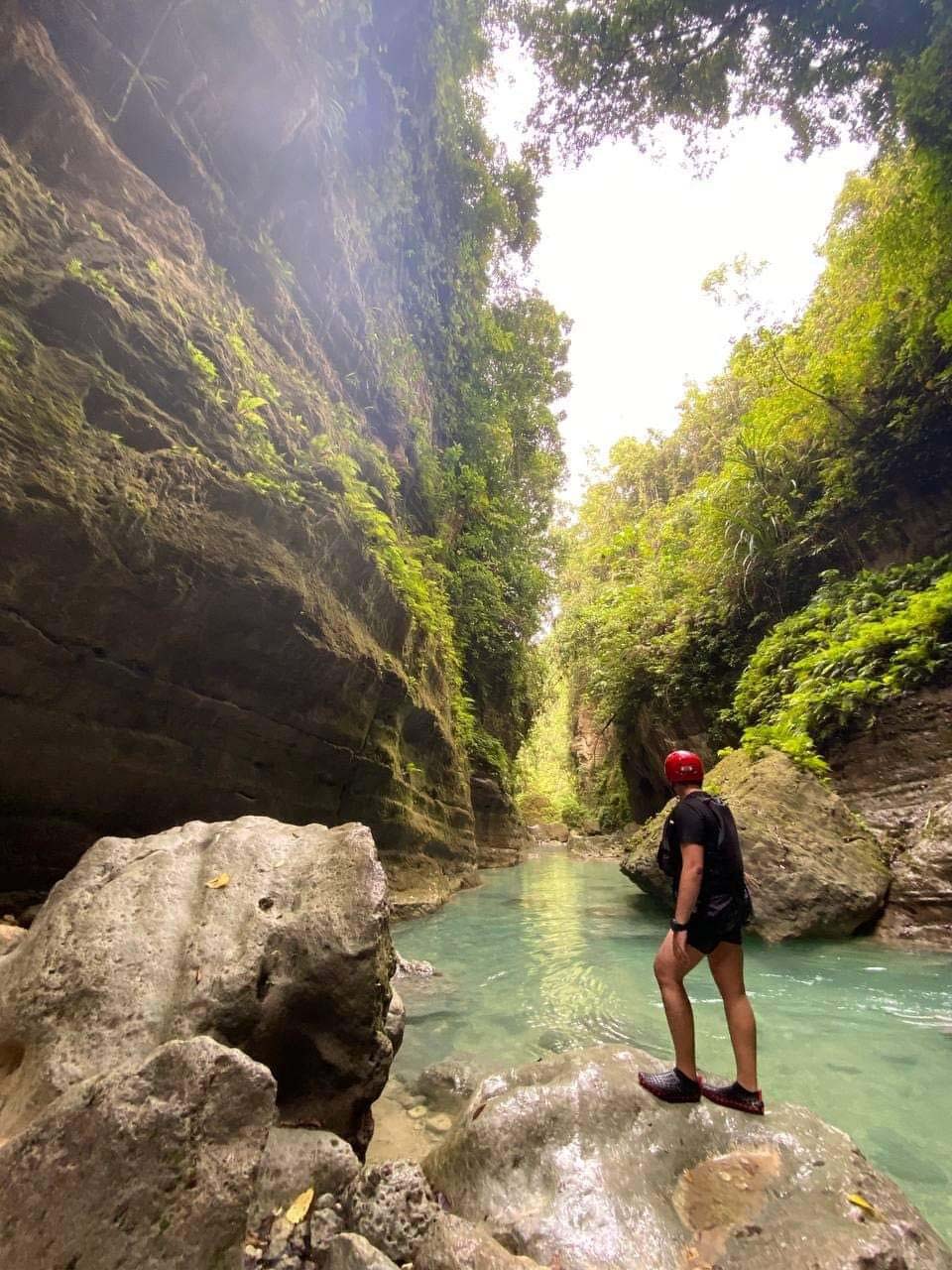Tour Packages on SALE! Book yours NOW!

Cebu City, known as the “Queen City of the South,” is a vibrant blend of history, culture, and modern urban life. As the oldest city in the Philippines, Cebu is not only a gateway to beautiful beaches and island adventures but also a treasure trove of historical landmarks, scenic gardens, and cultural experiences. A Cebu City tour offers a perfect introduction to the island’s rich heritage, architectural marvels, and bustling local life. Whether you’re a history buff, nature lover, or adventure seeker, a day exploring Cebu City promises to be an unforgettable experience.
No Cebu City tour is complete without visiting the Basilica del Santo Niño, the oldest Roman Catholic church in the Philippines. Built in 1565 by Spanish explorers, this basilica houses the miraculous image of the Santo Niño (Holy Child), believed to have been given by Ferdinand Magellan as a gift to the queen of Cebu. The basilica’s centuries-old stone walls and beautiful frescoes transport visitors back in time, and the devout locals gathering for prayers showcase the strong faith and devotion that remains a cornerstone of Cebuano culture.
While you’re here, don’t miss the Magellan’s Cross, located just a few steps away. This iconic wooden cross, encased in a protective shrine, symbolizes the arrival of Christianity in the Philippines. The murals on the ceiling illustrate the historic moment when Magellan planted the cross in Cebu, marking the beginning of Spanish colonization and Christianization.
Insider Tip: Visit the basilica during a Sunday mass to witness the lively atmosphere, or plan your trip around January to experience the Sinulog Festival, a colorful celebration in honor of the Santo Niño.
Next, head over to Fort San Pedro, the smallest and oldest triangular bastion fort in the country. Built by the Spanish in 1738, the fort was designed to protect against Muslim raiders and served as an army garrison, a revolutionary stronghold, and even a zoo throughout its history. Today, Fort San Pedro stands as a historical landmark and museum, offering a glimpse into Cebu’s colonial past.
Stroll through its stone corridors and gardens, and explore the exhibits showcasing artifacts, documents, and photos detailing Cebu’s Spanish era. The fort’s picturesque courtyard, surrounded by towering walls, makes it an ideal spot for photos or a quiet moment of reflection amid the city’s hustle and bustle.
Pro Tip: If you’re a history enthusiast, consider taking a guided tour to learn more about the fascinating stories behind this well-preserved fort.
For an immersive visual history lesson, make your way to the Heritage of Cebu Monument in the Parian district. This massive sculpture showcases significant events and figures in Cebu’s history, from the arrival of Magellan to the famous Battle of Mactan and the construction of historical landmarks like the Basilica del Santo Niño. Created by local artist Eduardo Castrillo, this intricately designed monument is a stunning tribute to Cebu’s rich heritage and resilience.
The monument is located in an area known for its historical significance, and walking around the neighborhood offers a glimpse into Cebu’s vibrant past, with old colonial houses and streets that echo the city’s glory days as a thriving Spanish settlement.
Fun Fact: The Parian district was once the center of commerce and trade during the Spanish colonial period, where Chinese merchants and local traders exchanged goods and stories.
For a splash of color and nature, head to Sirao Garden, often referred to as the “Little Amsterdam of Cebu.” Located in the mountain barangay of Sirao, this flower farm is famous for its vibrant rows of celosia flowers, which create a beautiful, Instagram-worthy backdrop. Visitors can stroll through the garden paths surrounded by a sea of red, orange, yellow, and pink blooms, or pose with various artistic installations inspired by Dutch windmills and sculptures.
The cool mountain breeze and panoramic views of the surrounding landscapes make Sirao Garden a refreshing stop on any city tour. Whether you’re a nature lover, photography enthusiast, or simply looking to relax amidst a floral paradise, Sirao Garden offers a peaceful escape from the city’s hustle.
Traveler Tip: Visit early in the morning or late in the afternoon for the best lighting and to avoid the crowds. The garden is especially vibrant during the cooler months of October to January.
Just a short drive from Sirao Garden lies another must-see attraction: the Temple of Leah. Often called Cebu’s “Taj Mahal,” this grandiose temple was built as a symbol of love by a Cebuano businessman for his late wife, Leah Albino-Adarna. Its Roman-inspired architecture, complete with massive pillars, statues, and intricate carvings, makes it a majestic sight against the backdrop of Cebu’s mountains.
The temple offers stunning views of the city and the sea, making it a perfect spot for photos, especially during sunset. Inside, you’ll find a museum and gallery featuring the couple’s collection of art, antiques, and memorabilia, giving visitors a glimpse into their story and the life of Cebu’s elite.
Pro Tip: Bring a wide-brimmed hat and sunscreen if visiting during the midday sun, as the temple’s open spaces can get quite warm. Sunset visits provide cooler temperatures and a magical golden glow.
To get a closer look at life during the Spanish colonial era, visit the Yap-Sandiego Ancestral House, one of the oldest residential houses in the Philippines. Built in the late 17th century, this well-preserved house showcases the traditional bahay na bato architecture – a mix of coral stones, wooden beams, and clay tiles.
Inside, you’ll find antique furniture, religious icons, and various artifacts that reflect the opulent lifestyle of the Chinese-Filipino family who owned the house. Walking through its rooms feels like stepping into a time capsule, offering a unique perspective on Cebu’s blend of Chinese, Spanish, and indigenous influences.
Traveler Tip: The house is still owned by the descendants of the original family, and you might even meet them during your visit, adding a personal touch to your experience.
For a change of pace, head up to the Cebu Taoist Temple, a spiritual sanctuary perched on the hills of Beverly Hills Subdivision. Built by Cebu’s Chinese community, this temple is a place of worship and reflection, offering panoramic views of the city below. The temple’s intricate dragon carvings, pagoda-style architecture, and peaceful gardens make it a serene escape from the city’s lively streets.
Pro Tip: Visit in the early morning or late afternoon to enjoy the cooler temperatures and to capture the best photos with softer lighting.
End your city tour with a stroll down Colon Street, the oldest and most historic street in the Philippines. Named after Christopher Columbus, Colon Street is a bustling avenue lined with shops, cinemas, and historic buildings. As you walk along this lively street, you’ll get a sense of Cebu’s evolution from a colonial port town to a modern metropolis.
Travel Tip: Watch out for your belongings and stay vigilant, as Colon Street is a busy area with a lot of foot traffic. It’s best experienced during the day or early evening when it’s most lively.
Exploring Cebu City: Practical Tips
For a taste of Cebu’s modern engineering prowess, drive over the Cebu-Cordova Link Expressway (CCLEX), the longest bridge in the Philippines. This impressive 8.9-kilometer bridge connects Cebu City to the island of Mactan through Cordova, offering breathtaking views of the Mactan Channel and Cebu’s skyline.
The bridge itself is an architectural marvel, with its tall pylons and bright LED lights illuminating the night. Whether you cross it by car or simply admire its grandeur from below, CCLEX is a testament to Cebu’s progress and vision for the future.
Traveler Tip: Plan your drive across the bridge around sunset for the most stunning views, as the sky transforms with hues of orange and purple, reflecting off the water.
After crossing CCLEX, head to 10,000 Roses Café in Cordova, a whimsical spot famous for its sea of artificial LED roses that light up beautifully at night. The roses, arranged to look like a glowing white field, create a magical ambiance as you stroll around or relax in the café’s outdoor seating area.
Sip a refreshing iced coffee or enjoy a snack as you take in the panoramic view of the Mactan Channel and Cebu’s skyline in the distance. The café is a favorite spot for couples and photographers, thanks to its romantic setting and stunning sunset views.
Pro Tip: Arrive before dusk to witness the transformation of the roses as they light up against the backdrop of the setting sun.
Conclusion: Cebu City Awaits You
Cebu City offers a fascinating journey through time, culture, and nature. From historical landmarks to scenic gardens like Sirao and architectural marvels like the Temple of Leah, a Cebu City tour reveals a tapestry of stories and sights that shape the vibrant spirit of Cebu. Whether you’re seeking history, cultural experiences, or just a beautiful escape, Cebu City promises an unforgettable adventure.
Are you ready to discover the Queen City of the South? Book your tour now! Let Cebu’s timeless charm and dynamic energy captivate your senses as you explore its historical streets, scenic gardens, and iconic temples.

Sea, Sun, and Sand
1782 Yakal St. Capitol Site Cebu City
Copyright © 2024 Brads Travel and Tours. All rights reserved | Designed and Powered by: WebExperts